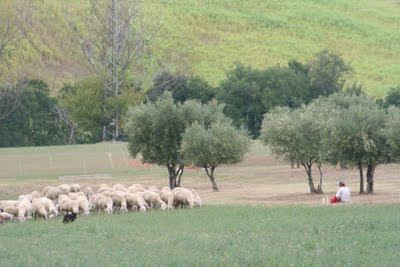 Tempting as it is to press the enter key 20 times and then type ‘timing’, I’m not going to. Nor, to be fair, am I going to reveal the secret of all comedy. If I knew that, then instead of sitting at my computer typing I’d be relaxing by a sun-soaked lagoon with my wife, our children, and their incredibly expensive home-schooling experts, while the butler serves us the appropriate meal for whichever time zone I’d eventually have settled for.
Tempting as it is to press the enter key 20 times and then type ‘timing’, I’m not going to. Nor, to be fair, am I going to reveal the secret of all comedy. If I knew that, then instead of sitting at my computer typing I’d be relaxing by a sun-soaked lagoon with my wife, our children, and their incredibly expensive home-schooling experts, while the butler serves us the appropriate meal for whichever time zone I’d eventually have settled for.Rather, I want to do some musing about the art of writing funny books for children. And it is an art - and a craft, too. I do get the impression that there are some people who think it’s easy; and reading some of the “funny” children’s books currently on the market, I can see why. But then, looking at some of the “comedy” written or broadcast for adults, I could see why anyone might think that’s easy, too; and it’s not. Quite clearly it’s not, or the overall standard would be a lot higher.
Oooh, I’m sounding like a grumpy old man today. Sorry. And I hope nobody thinks I’m saying all, or even most, funny books for kids aren’t funny, because I’m not. But there are some right shockers out there.
In my opinion. And there, of course, lies the first secret of comedy: finding the right audience. Because - up to a point, at least - comedy really is a matter of both taste and perspective. I loved The Office partly because it seemed to me horribly close to drama-documentary; I’ve known people with as little self-awareness as David Brent. My parents-in-law hated it because, whilst accepting that comedy needs to stretch the boundaries of believability a little, they felt The Office snapped those boundaries in two and then jumped on the pieces. Our different experiences mediated different understandings of the humour. Similarly, I suppose, there are jokes about DOS that computer technicians would find hilarious but that I wouldn’t get at all. So to write a successfully funny children’s book, firstly, you need to have an idea that’s sufficiently recognisable to enough children to make it work.
Once you’ve got that idea, what marks out, say, the Andy Stantons from the just-not-funnies? What’s the difference? For one answer, I might go back to Gillian Philip’s piece on Pixar’s Up, and say as she does: it’s the story that matters.
 A month or so back, I was on a panel with Andy Stanton, Kaye Umansky and Anthony McGowan (Anthony: get yourself a website, man, for goodness’ sake!), and among the many excellent points that were made was one I found intriguing: the jokes cut across the grain of the story. In other words, you’ve got a story going along in one direction, with jokes interrupting it by taking the reader’s mind off in another. I think there are exceptions, but this strikes me as being largely true, and if you look at Andy’s Mr Gum books - quite probably the funniest children’s books of the current crop - you’ll see this happening in spades. In fact, the interruption itself often becomes the joke, or amplifies it. Yet there is a story, and recognisable characters, and however silly and tangential the jokes - and however much they interrupt - they never actually stop the flow of the story.
A month or so back, I was on a panel with Andy Stanton, Kaye Umansky and Anthony McGowan (Anthony: get yourself a website, man, for goodness’ sake!), and among the many excellent points that were made was one I found intriguing: the jokes cut across the grain of the story. In other words, you’ve got a story going along in one direction, with jokes interrupting it by taking the reader’s mind off in another. I think there are exceptions, but this strikes me as being largely true, and if you look at Andy’s Mr Gum books - quite probably the funniest children’s books of the current crop - you’ll see this happening in spades. In fact, the interruption itself often becomes the joke, or amplifies it. Yet there is a story, and recognisable characters, and however silly and tangential the jokes - and however much they interrupt - they never actually stop the flow of the story.Put another way, there’s a delicate balance between story and jokes. It doesn’t have to be the same balance for each story - some funny books have lots of jokes and not much story; others have lots of story and not many jokes - but as long as the balance exists, as long as the tension between narrative and silliness is in some way maintained without detriment to either - the reader will be satisfied.
 By contrast, I’m currently reading a massive whopper of a book - which I shan’t name - with my nine-year-old son, which doesn’t actually seem to have any story at all. There are a lot of silly situations, but no discernible plot. A detail which appears to be absolutely central in the first couple of chapters suddenly ceases to have any bearing on matters. Characters - apparently major characters - disappear without warning, and then wander back three quarters of the book later, or behave without any particular consistency and without living up to the reputations other characters ascribe to them. Situations are set up solely for single, not terribly amusing, jokes. “Funny” things happen and almost immediately suffer deus ex machina reversals so that the next thing can happen. We’ve been reading it together, a bit at a time, for days if not weeks, and I just want it to be over.
By contrast, I’m currently reading a massive whopper of a book - which I shan’t name - with my nine-year-old son, which doesn’t actually seem to have any story at all. There are a lot of silly situations, but no discernible plot. A detail which appears to be absolutely central in the first couple of chapters suddenly ceases to have any bearing on matters. Characters - apparently major characters - disappear without warning, and then wander back three quarters of the book later, or behave without any particular consistency and without living up to the reputations other characters ascribe to them. Situations are set up solely for single, not terribly amusing, jokes. “Funny” things happen and almost immediately suffer deus ex machina reversals so that the next thing can happen. We’ve been reading it together, a bit at a time, for days if not weeks, and I just want it to be over.Yet... googling it, I can’t find a single review which doesn’t proclaim it to be comedy genius. And to be fair, my son, while not laughing out loud or even cracking a smile much of the time, claims to be enjoying it. So maybe it’s me who’s out of step. And maybe, when it comes down to it, personal taste is the most important factor.
Oh - and timing.
Thanks, by the way, to everyone who sent good wishes for my Punning Dad’s birthday - he had a great day. And just to keep you all informed of how the next generation of punsters is coming along: for reasons too tedious to explain, my wife’s computer is currently living on the dining table. And last night, while we were eating, I asked Punning Son (9) to be careful, thus:
“Don’t get chilli on Mummy’s Mac.”
To which he replied:
“She doesn’t mind getting rain on her mac."
[Perfectly timed beat]
A double pun! That’s my boy.
John’s website is at www.visitingauthor.com.
His latest book is Jack Slater and the Whisper of Doom (Young Corgi 2009; ISBN 978-0552558051).
And when this goes online he'll be in Germany without internet access, so if you ask him a question about this post and he doesn't answer, he's not being rude, okay?



















